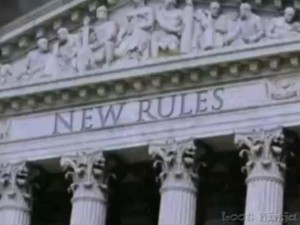Congressional Clarification Of Removal Rules: A Primer
By admin on August 1, 2013
 Federal court practitioners are well-advised to be aware of the key provisions of the Federal Courts Jurisdiction and Venue Clarification Act of 2011 (the “JVCA”), which went into effect on January 6, 2012. The JVCA amended 28 U.S.C. § 1446 in several significant ways. Although the JVCA did not revise existing law relating to the rules governing removal, the Act provided important clarification concerning previously conflicting judicial interpretations of these provisions.
Federal court practitioners are well-advised to be aware of the key provisions of the Federal Courts Jurisdiction and Venue Clarification Act of 2011 (the “JVCA”), which went into effect on January 6, 2012. The JVCA amended 28 U.S.C. § 1446 in several significant ways. Although the JVCA did not revise existing law relating to the rules governing removal, the Act provided important clarification concerning previously conflicting judicial interpretations of these provisions.
The JVCA clarified the law regarding timing for removal in three significant respects:
1. In a case removable based on the initial complaint, each defendant has thirty days after receipt of the complaint to remove;
2. Cases that are not initially removable may become removable on receipt of information in discovery satisfying the amount in controversy requirement; and
3. Removal can occur more than one year after the filing of the complaint if bad faith can be shown.
Pursuant to the JVCA, each defendant, and not just the first-served defendant, has its own thirty day clock to file a removal petition.
Thus, it no longer makes any difference that the first-served defendant failed to seek removal. Under the old rule, a savvy plaintiff would typically serve its state court pleading on the least sophisticated defendant first and hope to run out the 30-day clock. This play is no longer effective.
The JVCA codified the “rule of unanimity”, which requires all defendants in diversity cases to consent to removal. Failure to satisfy the “rule of unanimity” makes a defendant’s removal defective. How the practitioner complies with the “rule of unanimity” may vary by jurisdiction. Thus, practitioners should be careful to demonstrate consent in a manner that meets the requirements for the applicable jurisdiction.
According to the JVCA, if a case is not removable based on the initial pleading, information obtained in state court discovery may be used to support removal – notwithstanding the fact that the initial thirty-day post-service removal date have expired. This rule is codified in 28 U.S.C. § 1446(c)(3)(A), which qualifies discovery responses as an “other paper.”
A case now may be removed more than one year after commencement of the case if the moving defendant can demonstrate that the “plaintiff has acted in bad faith in order to prevent a defendant from removing the action.” 28 U.S.C. § 1446(c)(1). Although the JVCA does not define “bad faith,” it provides that a plaintiff who “deliberately fails to disclose the amount in controversy to prevent removal shall be deemed bad faith.”
According to the JVCA, “the sum demanded in good faith in the initial pleading shall be deemed to be the amount in controversy.” The JVCA resolved what had been a split between the federal appeals courts and adopted the majority view that it is the defendant’s burden to establish the  amount in controversy by a “preponderance of the evidence.” Under the new rule, if challenged, a defendant is required to present more than a conclusory statement that the amount in controversy exceeds $75,000.
amount in controversy by a “preponderance of the evidence.” Under the new rule, if challenged, a defendant is required to present more than a conclusory statement that the amount in controversy exceeds $75,000.
This article relied in large part on an excellent article appearing in Law 360 on July 25, 2013, titled “500 Days of the Revised Removal Statutes,” by Gregory F. Harley and Katie Wolf of Burr & Forman LLP in Atlanta, Georgia.
